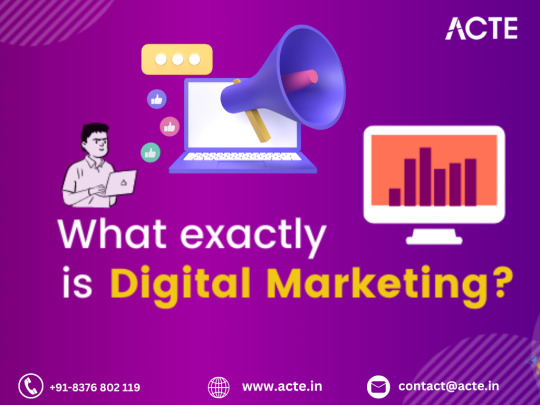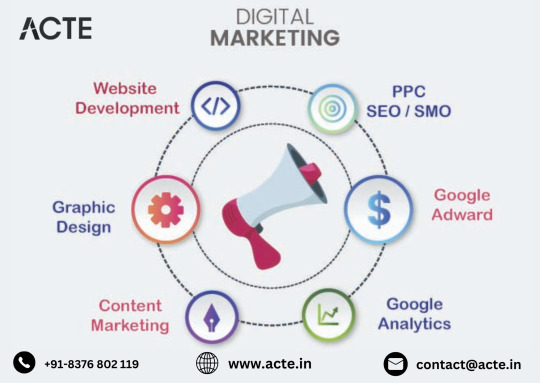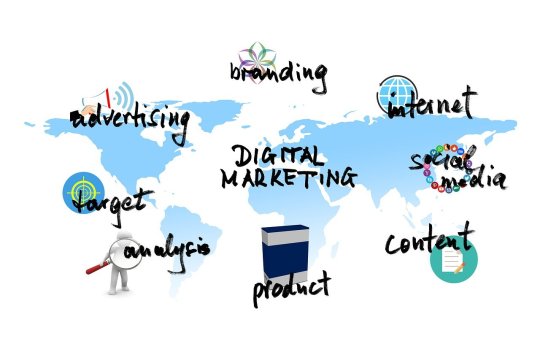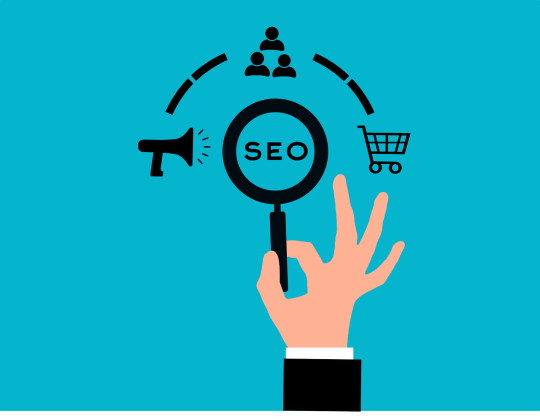#High-Quality Content That Attracts Paid Subscribers
Explore tagged Tumblr posts
Text
Substack Mastery Book: Chapter 8
Why Readers Pay for Substack Newsletters and What Type of Content Fails to Attract Subscribers Dear beta readers, Thank you for your valuable feedback on the previous seven chapters, which is helping me refine this book and enhance it as a valuable resource for fellow writers. I have covered seven critical aspects that have helped many readers jumpstart their Substack journey. Receiving…
#Avoiding Common Mistakes in Paid Newsletter Content#Building a Successful Substack Newsletter: Key Insights#Common Pitfalls in Substack Content to Avoid#Effective Strategies for Monetizing Substack Content#High-Quality Content That Attracts Paid Subscribers#How to Offer Exclusive Content on Substack#Secrets to Creating Valuable Substack Newsletters#Top Reasons Readers Cancel Paid Subscriptions#What Makes Substack Newsletters Worth Paying For#Why Readers Subscribe to Paid Newsletters#writers#writing
0 notes
Text
What’s the Fastest Way to Get Traffic to Your Website? 🚀
If you’ve just launched a website or are looking to give your traffic numbers a quick boost, you’re in the right place. Building sustainable traffic often takes time, but there are proven strategies to generate immediate results. Here are the fastest ways to drive traffic to your website:
1. Run Paid Advertising Campaigns
Paid ads are the quickest way to bring targeted traffic to your website. Platforms like Google Ads and social media networks (Facebook, Instagram, LinkedIn) allow you to target specific audiences based on demographics, interests, and behavior. Start with a small budget, monitor results, and optimize as you go.
2. Leverage Social Media Platforms
Post engaging and shareable content on platforms like Twitter, LinkedIn, Instagram, or TikTok. Use trending hashtags, collaborate with influencers, and join relevant groups or communities to amplify your reach.
3. Use Email Marketing
If you already have an email list, send a well-crafted email campaign to your subscribers. Include a compelling subject line, valuable content, and a clear call-to-action (CTA) that drives them to your website.
4. Engage in Online Communities
Participate in forums, Reddit threads, and Facebook groups related to your niche. Offer value by answering questions and sharing insights, linking back to your website when relevant. Avoid spamming, as it can harm your reputation.
5. Partner with Influencers or Bloggers
Collaborating with influencers in your industry can give you instant exposure. They can share your website with their audience via posts, stories, or shoutouts, driving traffic almost immediately.
6. Publish Guest Posts
Write high-quality guest articles for reputable blogs in your niche. Include a link to your website in the author bio or content, which can lead to a quick influx of traffic.
7. Offer Limited-Time Deals or Promotions
Create urgency by offering time-sensitive discounts or freebies. Promote these offers across social media and email to attract visitors quickly.
8. Optimize for Trending Keywords
Use tools like Google Trends or SEMrush to find trending topics or keywords in your industry. Create and publish high-quality content around these keywords to capture immediate search interest.
9. Use Viral Marketing Techniques
Design campaigns that are fun, interactive, and likely to be shared. Quizzes, memes, or giveaways are great examples of content that can go viral and drive traffic fast.
10. Partner with Traffic Experts
If you’re looking for a reliable, expert-driven solution to boost your website traffic quickly, platforms like Cavotra can provide tailored strategies and tools to help you achieve your goals.
Fast traffic is achievable, but the key to long-term success lies in combining quick wins with sustainable strategies like SEO and content marketing. Try these methods today and watch your website traffic soar! 🚀
2 notes
·
View notes
Text
The Importance of On-Page SEO: Boosting Your Website's Visibility
In the ever-evolving landscape of digital marketing, search engine optimization (SEO) remains a cornerstone strategy for enhancing online visibility and driving organic traffic to websites. While SEO encompasses a broad range of practices, on-page SEO is particularly crucial as it directly influences how search engines interpret and rank your content. In this blog post, we'll explore the importance of on-page SEO and how it can significantly impact your website's performance.
Understanding On-Page SEO
On-page SEO refers to the optimization techniques applied directly to the content and HTML source code of a webpage. Unlike off-page SEO, which involves external signals like backlinks, on-page SEO is entirely within your control. It includes optimizing elements such as meta tags, headings, content quality, internal links, and URL structure to improve your website's search engine rankings and user experience.
Key Elements of On-Page SEO
Title Tags: The title tag is one of the first things search engines and users see. A well-crafted title tag that includes relevant keywords can significantly improve your click-through rate (CTR) and rankings.
Meta Descriptions: While meta descriptions don't directly affect rankings, they influence CTR. A compelling meta description can entice users to click on your link, boosting your organic traffic.
Headings (H1, H2, H3, etc.): Proper use of headings helps search engines understand the structure and relevance of your content. It also enhances readability for users, making your content more engaging.
Content Quality: High-quality, relevant content is the cornerstone of on-page SEO. Content should be informative, engaging, and optimized with the right keywords to meet the needs of your target audience.
Keyword Optimization: Incorporating relevant keywords naturally within your content helps search engines understand the topic and context of your page. However, avoid keyword stuffing, as it can harm your rankings.
Internal Linking: Linking to other pages within your website helps search engines crawl your site more effectively and establishes a hierarchy of information, improving the user experience.
URL Structure: Clean, descriptive URLs that include keywords can improve your site's visibility and make it easier for users to navigate.
Image Optimization: Optimizing images by using descriptive file names, alt tags, and compressing files can improve your page load speed and make your site more accessible.
Benefits of On-Page SEO
Improved Search Engine Rankings: By optimizing on-page elements, you increase the likelihood of your content ranking higher in search engine results pages (SERPs). Higher rankings lead to more visibility and traffic.
Enhanced User Experience: On-page SEO practices, such as improving site speed and creating engaging content, contribute to a better user experience. Satisfied visitors are more likely to stay longer, reducing bounce rates and increasing conversions.
Increased Organic Traffic: Effective on-page SEO helps attract more organic traffic by making your content more visible and relevant to search queries. This leads to a steady stream of visitors without the need for paid advertising.
Higher CTR: Well-optimized title tags and meta descriptions can improve your CTR, driving more traffic to your site from search engines.
Better Conversion Rates: By providing a seamless and enjoyable user experience, on-page SEO can lead to higher conversion rates, turning visitors into customers or subscribers.
Conclusion
On-page SEO is an essential component of a successful digital marketing strategy. By paying attention to the elements within your control, you can significantly improve your website's visibility, user experience, and overall performance. Investing time and effort into on-page SEO not only enhances your search engine rankings but also drives sustainable, long-term growth for your online presence. Start optimizing today and watch your website soar to new heights!
2 notes
·
View notes
Text
Navigating the Digital Landscape: Strategies for Effective Digital Marketing
In today's rapidly evolving digital landscape, understanding the intricacies of digital marketing is crucial for businesses aiming to excel in a competitive environment. With a plethora of strategies and tactics available, comprehending the mechanics of digital marketing can serve as the foundation for unlocking unparalleled success online. In this comprehensive guide, we'll delve into the nuances of digital marketing, exploring its core principles and strategies to empower businesses in navigating the dynamic online realm.

Introduction to Digital Marketing
Digital marketing encompasses a wide range of online marketing tactics and strategies aimed at engaging with target audiences, driving brand awareness, and achieving business objectives. Unlike traditional marketing methods, which rely on conventional media channels such as print, television, and radio, digital marketing leverages the power of the internet and digital technologies to connect with consumers in a more targeted and measurable manner.
Understanding the Core Components of Digital Marketing
At its core, digital marketing comprises various channels and techniques, each serving distinct purposes and catering to different aspects of the consumer journey. From search engine optimization (SEO) and search engine marketing (SEM) to social media marketing (SMM), content marketing, email marketing, and more, the digital marketing landscape is vast and multifaceted.
Exploring Key Digital Marketing Channels
1. Search Engine Optimization (SEO): SEO involves optimizing a website's content and structure to improve its visibility in search engine results pages (SERPs) and drive organic traffic. By optimizing for relevant keywords, creating high-quality content, and earning backlinks from reputable sources, businesses can enhance their website's search engine rankings and attract more visitors.
2. Search Engine Marketing (SEM) and Pay-Per-Click (PPC) Advertising: SEM encompasses paid advertising efforts on search engines like Google and Bing. Through PPC campaigns, advertisers bid on keywords relevant to their products or services and pay a fee each time their ad is clicked. SEM allows businesses to target specific keywords, demographics, and geographic locations, ensuring their ads reach the right audience at the right time.
3. Social Media Marketing (SMM): SMM involves leveraging social media platforms such as Facebook, Instagram, Twitter, LinkedIn, and Pinterest to connect with target audiences, build brand awareness, and engage with customers. By sharing compelling content, running targeted ad campaigns, and fostering meaningful interactions, businesses can cultivate a loyal following and drive user engagement on social media.

4. Content Marketing: Content marketing revolves around creating and distributing valuable, relevant, and informative content to attract and retain a target audience. From blog posts and articles to videos, infographics, and eBooks, content marketing allows businesses to showcase their expertise, educate their audience, and establish thought leadership in their industry.
5. Email Marketing: Email marketing remains one of the most effective ways to nurture leads, promote products or services, and engage with customers. By sending targeted, personalized emails to subscribers, businesses can deliver relevant content, special offers, and updates directly to their inbox, driving traffic to their website and encouraging conversions.
6. Influencer Marketing: Influencer marketing involves collaborating with influential individuals or personalities on social media platforms to promote products or services to their audience. By partnering with influencers who align with their brand values and target demographics, businesses can leverage their credibility and reach to amplify their marketing message and drive conversions.
7. Affiliate Marketing: Affiliate marketing is a performance-based marketing strategy where businesses partner with affiliates or third-party websites to promote their products or services. Affiliates earn a commission for every sale or lead generated through their referral, incentivizing them to promote the brand and drive conversions.
8. Display Advertising: Display advertising involves placing visual advertisements, such as banner ads, video ads, or interactive ads, on websites, apps, or social media platforms. Display ads can help businesses increase brand visibility, reach a broader audience, and drive traffic to their website or landing pages.
9. Mobile Marketing: With the proliferation of mobile devices, mobile marketing has become increasingly important for businesses looking to connect with consumers on-the-go. From mobile-optimized websites and apps to SMS marketing and location-based marketing, mobile marketing offers a variety of tactics to engage with mobile users and drive conversions.
Harnessing the Power of Data and Analytics
Central to digital marketing success is the ability to track, measure, and analyze campaign performance using data and analytics tools. By monitoring key metrics such as website traffic, conversion rates, click-through rates, and return on investment (ROI), businesses can gain valuable insights into the effectiveness of their digital marketing efforts and make data-driven decisions to optimize performance.
Conclusion
In today's digital age, mastering the art of digital marketing is essential for businesses looking to thrive in a competitive landscape. By leveraging the diverse array of digital marketing channels and techniques available, businesses can connect with their target audience, drive brand awareness, and achieve their marketing objectives effectively. With a strategic approach and a focus on delivering value to consumers, digital marketing offers endless opportunities for businesses to succeed in the dynamic online realm.
#tech#training#digital marketing#digital marketing company#email marketing#digital marketing course#online marketing#search engine optimization#seo#seo services
3 notes
·
View notes
Text
Ultimate Guide to Real Estate Lead Generation: Digital Pleasure World
Real Estate Lead Generation: In the fast-paced world of real estate, the quest for quality leads is akin to finding a gem in a sea of stones. In this comprehensive guide, we'll delve into the realm of digital marketing and unveil a treasure trove of strategies to help you unlock the door to success in lead generation. Whether you're a seasoned agent or just dipping your toes into the market, these actionable tips will pave the way for your journey towards real estate prosperity.
Chapter 1: Crafting Your Digital Presence
Your online presence is your digital storefront, beckoning potential clients to step inside and explore the world of real estate. In this chapter, we'll discuss the foundational elements of establishing a captivating digital presence.
Building a Stunning Website: Your website serves as the cornerstone of your online presence. Invest in a sleek and user-friendly design that showcases your listings, services, and expertise.
Mastering the Art of SEO: Unlock the power of search engine optimization (SEO) to ensure your website ranks high in search engine results. Conduct keyword research, optimize meta tags, and create compelling content to attract organic traffic.
Embracing Content Marketing: Content is king in the digital realm. Create engaging blog posts, videos, and infographics that educate and inspire your audience. Share valuable insights, market trends, and neighborhood highlights to establish yourself as a trusted authority in the industry.

Chapter 2: Social Media Mastery
In the age of social media, cultivating a strong presence on popular platforms is essential for connecting with potential clients and nurturing leads. Let's explore how you can leverage the power of social media to elevate your real estate game.
Harnessing the Power of Facebook: With over 2 billion monthly active users, Facebook is a goldmine for real estate professionals. Create compelling posts, share captivating visuals, and engage with your audience to cultivate meaningful relationships.
Instagram: The Visual Showcase: As a visual-centric platform, Instagram offers the perfect canvas to showcase stunning property photos and videos. Use hashtags, stories, and reels to attract attention and drive engagement.
LinkedIn: The Professional Network: Position yourself as a thought leader in the real estate industry by sharing valuable insights and networking with fellow professionals on LinkedIn. Join industry groups, participate in discussions, and publish articles to expand your reach.
Chapter 3: Email Marketing Excellence
Email marketing remains one of the most effective tools in a real estate agent's arsenal for nurturing leads and staying top-of-mind with clients. Let's uncover the secrets to crafting compelling email campaigns that drive results.
Building Your Email List: Start by building a robust email list of potential clients and leads. Offer valuable incentives such as free market reports or exclusive listings to entice visitors to subscribe to your newsletter.
Segmentation and Personalization: Tailor your email campaigns to specific segments of your audience based on their interests, preferences, and buying behavior. Personalize your messages to make each recipient feel valued and understood.
Automation and Drip Campaigns: Streamline your email marketing efforts with automation tools that allow you to send targeted messages at the right time. Set up drip campaigns to nurture leads through each stage of the buying or selling process.
Chapter 4: Paid Advertising Strategies
In a competitive market, paid advertising can give you the edge you need to stand out from the crowd and reach your target audience with precision. Let's explore the world of paid advertising and discover how you can maximize your ROI.
Google Ads: The Gateway to Success: Dominate the search engine results page with Google Ads campaigns that target keywords relevant to your niche. Craft compelling ad copy, optimize your landing pages, and track your conversions to measure your success.
Facebook and Instagram Ads: Leverage the powerful targeting options available on Facebook and Instagram to reach potential clients based on demographics, interests, and behaviors. Experiment with different ad formats such as carousel ads, video ads, and lead generation ads to find what works best for your audience.
Retargeting Campaigns: Keep your brand top-of-mind with retargeting campaigns that display ads to users who have previously visited your website or engaged with your content. Use dynamic retargeting to show personalized ads featuring specific properties or listings that match their interests.
Chapter 5: The Human Touch: Networking and Relationship Building
In an industry built on trust and personal connections, never underestimate the power of good old-fashioned networking. Let's explore how you can cultivate meaningful relationships with clients, colleagues, and industry influencers to fuel your success.
Joining Professional Associations: Get involved in local real estate associations and networking groups to expand your professional network and stay informed about industry trends and developments.
Hosting Events and Workshops: Organize educational events, workshops, or webinars to provide value to your audience and establish yourself as a knowledgeable expert in your field. Use these opportunities to forge new connections and nurture existing relationships.
Building Strategic Partnerships: Collaborate with complementary businesses such as mortgage brokers, home inspectors, and interior designers to offer additional value to your clients and expand your referral network. Establish mutually beneficial partnerships that help you reach new audiences and generate more leads.
Chapter 6: Tracking Your Success and Iterating for Improvement
In the ever-evolving landscape of digital marketing, success is not a destination but a journey of continuous improvement. Let's discuss how you can track your progress, analyze your results, and iterate your strategies for maximum impact.
Setting Measurable Goals: Define clear, measurable goals for your lead generation efforts, whether it's increasing website traffic, growing your email list, or closing more deals. Establish key performance indicators (KPIs) to track your progress and evaluate your success.
Analyzing Your Data: Use analytics tools such as Google Analytics, Facebook Insights, and email marketing platforms to gather data about your audience, engagement metrics, and conversion rates. Analyze this data to identify patterns, trends, and areas for improvement.
Experimenting and Testing: Don't be afraid to experiment with new strategies, tactics, and channels to see what resonates with your audience. A/B test your email subject lines, ad creatives, and landing page designs to optimize your performance and drive better results.
Staying Agile and Adaptable: In the fast-paced world of digital marketing, flexibility is key to staying ahead of the curve. Stay informed about industry trends, algorithm changes, and emerging technologies, and be prepared to adapt your strategies accordingly.
Conclusion
Congratulations! You've reached the end of our journey through the world of real estate lead generation. Armed with the knowledge and strategies outlined in this guide, you're well-equipped to navigate the digital landscape and unlock the door to success in your real estate endeavors. Remember, Rome wasn't built in a day, and neither is a thriving real estate business. Stay persistent, stay innovative, and above all, stay true to your passion for helping clients find their dream homes. Here's to your continued success in the exciting world of real estate!
2 notes
·
View notes
Text
THE ULTIMATE GUIDE TO B2B MARKETING IN 2023
What is B2B?
B2B stands for “business-to-business,” which refers to a business model where businesses sell products and services to other companies as opposed to consumers. If you’re a new marketer in the B2B space, or a small B2B business owner learning the ropes, B2B marketing can seem new and strange, but not to worry — you’ll soon learn it’s not so different from typical consumer marketing, and we’ll go over everything you need to know so you can create an effective B2B marketing strategy.

Set Clear Objectives:
Determine what you want to achieve with your B2B marketing efforts. Common objectives include lead generation, brand awareness, customer retention, and revenue growth. Make sure your goals are specific, measurable, attainable, relevant, and time-bound (SMART).
Content Marketing for B2B
Content marketing is a critical component of a successful B2B marketing strategy. It involves creating and distributing valuable, relevant, and consistent content to attract and engage your target audience. Here are key steps and considerations for implementing effective content marketing for B2B in 2023
Search Engine Optimization (SEO)
Search Engine Optimization (SEO) is the practice of optimizing your website or online content to improve its visibility and ranking on search engine results pages (SERPs). The primary goal of SEO is to increase organic (non-paid) traffic to your website. Here are the key components and strategies for effective SEO:
On-Page SEO:
Optimize your web pages for search engines by including target keywords in key areas such as the page title, headings, meta descriptions, and content. Ensure your content is well-structured and user-friendly.
Backlinks (Off-Page SEO):
Acquire high-quality backlinks from reputable websites in your industry. Backlinks signal to search engines that your content is authoritative and trustworthy.
Social Media Marketing for B2B
Social media marketing for B2B (Business-to-Business) is an effective way to build brand awareness, engage with your target audience, and generate leads. While B2B social media strategies may differ from B2C (Business-to-Consumer) strategies, they can be equally impactful. Here are key considerations and strategies for social media marketing in the B2B context in 2023:
Pay-Per-Click (PPC) Advertising
Pay-Per-Click (PPC) advertising is an online advertising model in which advertisers pay a fee each time their ad is clicked. It's a highly effective method for driving targeted traffic to a website or landing page, and it's commonly used for both B2B (Business-to-Business) and B2C (Business-to-Consumer) marketing. Here are the key components and strategies for PPC advertising:
Website Optimization and User Experience (UX)
Website optimization and user experience (UX) are critical factors for the success of your website, both in terms of search engine rankings and user satisfaction. Here are key considerations for optimizing your website and providing a great user experience:
Email Marketing
Email marketing is a powerful digital marketing strategy that involves sending targeted emails to a group of subscribers or customers with the goal of building relationships, driving engagement, and achieving specific business objectives. Whether you're a B2B (Business-to-Business) or B2C (Business-to-Consumer) organization, email marketing can be highly effective. Here's a guide on how to do email marketing effectively:
Video Marketing in B2B
Video marketing in the B2B (Business-to-Business) context has become increasingly important, as it allows you to effectively convey complex information, showcase your products or services, and engage with your target audience. Here's a guide on how to use video marketing effectively in B2B in 2023:
3 notes
·
View notes
Text
Synergizing Content Marketing with Digital Marketing for Success
In the ever-evolving landscape of digital marketing, content marketing has emerged as a powerful strategy for businesses to connect with their target audience and drive growth. When combined effectively, content marketing and digital marketing create a potent synergy that can catapult your brand to new heights. In this blog, we'll explore the symbiotic relationship between these two strategies and how to harness their combined potential.
1. Content is the Heart of Digital Marketing Content is the backbone of digital marketing. Whether it's blog posts, social media updates, videos, or email newsletters, content serves as the vehicle for delivering your message to the right audience. High-quality, relevant, and valuable content not only attracts potential customers but also keeps them engaged with your brand.

2. SEO and Content Marketing Go Hand in Hand Search engine optimization (SEO) is a crucial component of digital marketing. It determines your website's visibility on search engine results pages (SERPs). Effective content marketing, with well-optimized content, can significantly enhance your SEO efforts. High-quality blog posts, articles, and other content pieces can improve your website's rankings, driving organic traffic and reducing your reliance on paid advertising.

3. Content Builds Trust and Authority In the digital realm, trust is a precious commodity. Content marketing allows you to establish your brand as an authoritative and trustworthy source of information in your industry. By consistently providing valuable content that addresses the needs and pain points of your audience, you can foster trust and credibility, which are vital for converting prospects into loyal customers.

4. Social Media Amplifies Content Reach Social media is a key element of digital marketing, and it plays a pivotal role in amplifying your content's reach. Sharing your blog posts, videos, and infographics on social platforms can help you engage with your audience, encourage sharing, and increase your content's exposure. This, in turn, can drive more traffic to your website and expand your brand's online presence.

5. Email Marketing Nurtures Relationships Email marketing is another integral part of digital marketing, and it complements content marketing exceptionally well. By using well-crafted content in your email campaigns, you can nurture relationships with your subscribers. Newsletters, product updates, and educational content delivered via email can keep your audience engaged and informed, ultimately leading to conversions and sales.

6. Data-Driven Insights for Continuous Improvement One of the significant advantages of digital marketing is the availability of data and analytics. When content marketing is integrated into your digital strategy, you gain access to valuable insights about your audience's behavior. You can track which content resonates the most, what drives conversions, and where you need to make improvements. These insights empower you to refine your strategy continually.

7. Consistency and Persistence Are Key To make the most of content marketing within your digital strategy, consistency and persistence are paramount. Regularly publishing high-quality content, optimizing it for SEO, and promoting it through various digital channels are all essential components of a successful content marketing effort.

In conclusion, content marketing and digital marketing are not separate entities but two sides of the same coin. When combined strategically, they create a synergy that can propel your brand's online presence, build trust with your audience, and drive business growth. By focusing on producing valuable content and integrating it seamlessly into your digital marketing strategy, you can harness the full potential of this dynamic duo.
#ContentMarketing#DigitalMarketing#MarketingStrategy#DigitalSuccess#ContentStrategy#SEO#OnlinePresence#ContentCreation#BrandAuthority#DataAnalytics#EmailMarketing#SocialMediaMarketing#DigitalStrategy#ContentSynergy#MarketingInsights#ContentOptimization#AudienceEngagement#TrustBuilding#ContentConsistency#BusinessGrowth
2 notes
·
View notes
Text
The Basics of Digital Marketing: A Comprehensive Guide
In our increasingly digital world, traditional marketing approaches have given way to a more dynamic and data-driven landscape known as digital marketing. With the vast array of online platforms and tools available, understanding the basics of digital marketing is crucial for individuals and businesses alike. In this comprehensive guide, we will explore the fundamental principles and strategies that underpin successful digital marketing campaigns.
What is Digital Marketing?
Digital marketing encompasses all marketing efforts that use an electronic device or the internet. It's an umbrella term that covers a wide range of online activities aimed at reaching and engaging a target audience. Unlike traditional marketing, which relies on print media, TV, or radio, digital marketing leverages the power of the internet to connect with potential customers.
Key Components of Digital Marketing
Search Engine Optimization (SEO): SEO involves optimizing your website and content to rank higher in search engine results. This organic traffic source is critical for visibility and long-term online success.

Content Marketing: Content is king in the digital realm. Creating valuable and relevant content helps attract and engage your audience. Blog posts, videos, infographics, and podcasts all fall under this category.
Social Media Marketing: Utilizing platforms like Facebook, Instagram, Twitter, and LinkedIn to connect with your audience, promote your brand, and drive traffic to your website.
Email Marketing: Sending targeted emails to a list of subscribers can be an incredibly effective way to nurture leads and maintain customer relationships.
Pay-Per-Click (PPC) Advertising: PPC campaigns involve paying a fee each time someone clicks on your ad. Google Ads and Facebook Ads are popular PPC platforms.
Affiliate Marketing: Partnering with individuals or organizations to promote your products or services in exchange for a commission on sales generated through their efforts.
Influencer Marketing: Collaborating with influencers in your niche to reach their dedicated followers and build credibility.
Analytics and Data Analysis: Collecting and analyzing data from various digital marketing channels to understand user behavior and make informed decisions.
The Digital Marketing Funnel
A fundamental concept in digital marketing is the marketing funnel, which represents the customer's journey from awareness to purchase. The funnel consists of three main stages:
Top of the Funnel (TOFU): This is the awareness stage, where potential customers become aware of your brand or product. Content like blog posts and social media posts can attract users at this stage.
Middle of the Funnel (MOFU): At this stage, users are considering their options and researching more in-depth. Guides, case studies, and email newsletters can nurture leads in the middle of the funnel.
Bottom of the Funnel (BOFU): This is the decision stage, where users are ready to make a purchase. Product demos, customer reviews, and targeted offers are essential at this point.
Crafting Your Digital Marketing Strategy
To succeed in digital marketing, you must develop a well-thought-out strategy. Here's a simplified step-by-step process:
Set Clear Goals: Define what you want to achieve with your digital marketing efforts, whether it's increasing website traffic, generating leads, or boosting sales.
Know Your Audience: Understand your target audience's demographics, interests, and pain points to create content and campaigns that resonate with them.
Choose the Right Channels: Select the digital marketing channels that align with your goals and where your audience spends their time.
Create Compelling Content: Develop high-quality, engaging content that addresses your audience's needs and interests.
Implement SEO Best Practices: Optimize your website and content for search engines to improve your organic visibility.
Leverage Paid Advertising: Use paid advertising campaigns strategically to complement your organic efforts.
Measure and Analyze: Continuously monitor your digital marketing performance using tools like Google Analytics and adjust your strategy based on data insights.
Iterate and Improve: Digital marketing is an ongoing process. Regularly review and refine your strategy to stay competitive and relevant.
Conclusion
Digital marketing is a dynamic and ever-evolving field that offers incredible opportunities for businesses and marketers. By understanding its fundamentals, you can harness the power of the internet to connect with your target audience, build brand awareness, and drive growth. Stay tuned to explore more advanced digital marketing concepts and strategies as you embark on your journey to online success.
4 notes
·
View notes
Text
A great opportunity to get free traffic ( Kindle eBook )

Driving website traffic from free offers is a great way to attract visitors and potentially convert them into customers or subscribers. Here are some effective methods to do this:
Create High-Quality Free Content: Start by developing valuable, high-quality content that addresses the needs and interests of your target audience. This could include ebooks, guides, templates, checklists, or other resources that provide genuine value. Ensure that the content is well-researched, well-written, and visually appealing.
Leverage Content Marketing: Use your free content as the centerpiece of your content marketing strategy. Create blog posts, social media updates, and email campaigns that promote your free offers. Make sure to optimize your content for relevant keywords to improve its visibility in search engines.
Opt-In Forms and Landing Pages: Design dedicated landing pages for each of your free offers. Include compelling headlines, concise descriptions of the value provided, and clear calls to action (CTAs) prompting visitors to download or access the content. Place opt-in forms strategically on your website, including within blog posts, pop-ups, or as exit-intent overlays.
Promote on Social Media: Share your free offers on your social media channels. Craft engaging posts that highlight the benefits of downloading or accessing your content. Use relevant hashtags and encourage sharing among your followers to extend your reach.
Email Marketing: Utilize your email list to promote your free offers. Send targeted email campaigns to your subscribers, offering the free content as a valuable resource. Make sure your email subject lines are enticing to increase open rates.
Collaborate and Guest Posting: Collaborate with influencers, industry experts, or other websites in your niche. Guest posting on reputable sites can introduce your free offers to a wider audience. Ensure that the content you provide as a guest is informative and relevant to the host website's audience.
Run Contests and Giveaways: Host contests or giveaways on your website or social media platforms. Require participants to enter by subscribing to your email list or sharing your free offers. This can quickly expand your reach and attract a new audience.
Engage in Online Communities: Participate in online forums, discussion groups, and social media communities relevant to your niche. Share your free offers when appropriate, but always aim to provide value and build relationships rather than solely promoting your content.
Repurpose Content: Repurpose your free content into various formats such as videos, podcasts, infographics, or webinars. Different formats can reach different audiences and provide fresh opportunities to share your offers.
Monitor and Refine: Continuously monitor the performance of your free offers and the channels you use to promote them. Use analytics to track how many people are accessing your content and where your traffic is coming from. Adjust your strategies based on what works best for your audience.
Remember that the key to success with free offers is not just getting traffic but converting that traffic into engaged subscribers or customers. Focus on providing real value, and over time, you'll build a loyal audience that trusts your brand and is more likely to engage with your paid offerings.
What to Giveaway
Deciding what to give away as a freebie or giveaway largely depends on your target audience, niche, and goals. The key is to offer something valuable that resonates with your audience's interests and needs. Here are some ideas for giveaways:
Ebooks and Guides: Create in-depth ebooks, guides, or whitepapers that provide valuable information on a specific topic within your niche. These can be comprehensive resources that showcase your expertise.
Checklists and Templates: Offer downloadable checklists, templates, or worksheets that simplify a particular task or process. For example, a marketing agency might offer a social media content calendar template.
Webinars and Workshops: Host live or recorded webinars or workshops that dive deep into a relevant subject matter. Webinars allow you to engage with your audience and demonstrate your expertise in real-time.
Video Tutorials: Create video tutorials that teach specific skills or demonstrate how to use a product or service effectively. Videos are highly engaging and can be shared across various platforms.
Email Courses: Develop a series of email courses that provide valuable lessons over several days or weeks. These can help nurture leads and build a relationship with your audience.
Resource Lists: Share curated lists of tools, apps, books, or other resources related to your niche. These lists should save your audience time and effort in finding valuable resources themselves.
Exclusive Access: Offer exclusive access to a members-only section of your website with premium content, special discounts, or early access to new products or services.
Printables: Create downloadable printables such as calendars, planners, coloring pages, or inspirational posters. These can be particularly effective in creative and educational niches.
Samples or Trials: Provide free samples of your product or a limited-time trial of your service. This can give potential customers a taste of what you offer and encourage them to make a purchase.
Contests and Giveaways: Host contests or giveaways where participants can win prizes related to your niche or products. Encourage sharing and engagement on social media to increase your reach.
Resource Kits: Bundle together a collection of related resources, such as ebooks, templates, and videos, into a comprehensive resource kit that offers a holistic solution to a specific problem.
Exclusive Discounts: Offer exclusive discounts or coupon codes for your products or services. This can incentivize visitors to make a purchase and can be particularly effective for e-commerce businesses.
Assessments and Quizzes: Create interactive assessments or quizzes that help your audience gain insights into their needs or preferences. Follow up with personalized recommendations or content based on their results.
Case Studies: Share real-life case studies or success stories related to your products or services. These can showcase the tangible benefits of what you offer.
Custom Tools: Develop simple online tools or calculators that help visitors solve a problem or make a decision. For example, a finance website might provide a retirement savings calculator.
Before deciding on a giveaway, conduct research to understand your audience's pain points and preferences. Additionally, consider conducting surveys or asking for feedback to tailor your freebies to their specific needs and interests. The more relevant and valuable your giveaway, the higher the chances of attracting and retaining your target audience.
#freetraffic#marketing#traffic#digitalmarketing#socialmediamarketing#onlinemarketing#seo#affiliatemarketing#marketingstrategy#freeleads#freeadvertising#marketingagency#brandawraness#socialmediamanagement#marketingsolutions#creative#webtrafficgeneration#marketingagencymalaysia#kualalumpur#webtraffictips#webtraffic#businessleads#ranked#leads#ranking#rankings#facebook#affiliatemarketer#freetraffik#freetrafficmethod
2 notes
·
View notes
Text
Driving Massive Traffic for Your Business and Clients Strategies for Success
In today's competitive digital landscape, driving massive traffic to your business and your clients' businesses is essential for sustained growth and success. Increased traffic not only enhances brand visibility but also boosts conversions, expands customer reach, and ultimately drives business growth. In this article, we will explore effective strategies to drive massive traffic to your business and clients, helping you achieve remarkable results in the online sphere.
Search Engine Optimization (SEO): Implementing a comprehensive SEO strategy is crucial to drive organic traffic to your website and your clients' websites. Conduct thorough keyword research to identify relevant search terms and optimize website content accordingly. Pay attention to on-page elements such as meta tags, headings, and URL structures. Additionally, focus on building high-quality backlinks from authoritative sources to enhance search engine rankings and drive targeted traffic.
Content Marketing: Developing a content marketing strategy is instrumental in attracting and engaging your target audience. Create valuable, informative, and engaging content through blog posts, articles, videos, infographics, and podcasts. Optimize content for search engines and share it across social media platforms to increase visibility and drive traffic. Encourage your clients to produce high-quality content as well, ensuring consistent and valuable information for their target audience.
Social Media Marketing: Leverage the power of social media platforms to drive traffic to your business and your clients' businesses. Develop a strong social media presence across relevant platforms, engage with the audience, and share valuable content regularly. Utilize paid advertising options on platforms such as Facebook, Instagram, Twitter, and LinkedIn to expand reach and target specific demographics. Encourage clients to maintain an active social media presence and engage with their followers to foster a loyal community.
Influencer Marketing: Collaborating with influencers in your industry can significantly boost brand visibility and drive traffic. Identify influencers whose audience aligns with your target market and establish partnerships for content promotion or product endorsements. The influencer's endorsement can introduce your business and your clients' businesses to a vast, engaged audience, resulting in increased traffic and brand exposure.
Email Marketing: Build a robust email marketing strategy to engage with your existing audience and drive traffic to your website and your clients' websites. Offer valuable incentives, such as exclusive content, promotions, or discounts, to encourage visitors to subscribe. Send regular newsletters, personalized recommendations, and targeted campaigns to nurture leads, drive traffic, and convert prospects into customers.
Paid Advertising: Investing in targeted paid advertising campaigns can yield significant traffic results. Utilize platforms like Google Ads, Facebook Ads, or LinkedIn Ads to reach your desired audience. Develop compelling ad copies, leverage precise targeting options, and continuously monitor and optimize campaigns to maximize ROI and drive massive traffic to your website and your clients' websites.
Strategic Partnerships and Collaborations: Form strategic partnerships and collaborations with complementary businesses to expand your reach and drive traffic. Seek opportunities for cross-promotion, co-marketing initiatives, or joint webinars or events. By tapping into each other's networks and leveraging shared audiences, you can significantly increase traffic and reach new potential customers.
Conclusion: Driving massive traffic to your business and your clients' businesses is a multifaceted endeavor that requires a comprehensive and strategic approach. By employing effective strategies such as SEO, content marketing, social media marketing, influencer collaborations, email marketing, paid advertising, and strategic partnerships, you can attract, engage, and convert a significant volume of visitors. Remember to consistently track and analyze traffic data, optimize your strategies based on insights, and adapt to evolving trends in the digital landscape. With a well-executed traffic generation strategy, you can propel your business and your clients' businesses to new heights of online success.
To more details click this link: https://drive.google.com/file/d/1yRP8QxoL5iam9IGMpp1QlsuMss-fOs8I/view

3 notes
·
View notes
Text
Maximizing Your OnlyFans Revenue: Tips for Buying Promotion Services

OnlyFans has emerged as a powerful platform for creators to monetize their content and connect with their audience. However, with countless creators vying for attention, effectively promoting your OnlyFans page is essential to maximizing your revenue. One way to boost your visibility is by investing in promotion services. In this blog, we’ll discuss tips for buying promotion services and how they can help you grow your subscriber base and increase your earnings.
Why Buy Promotion Services?
Investing in promotion services can be a game-changer for your buy OnlyFans profile. Here are a few reasons why:
Increased Visibility: A good promotion strategy can help your profile reach a wider audience, increasing your chances of attracting potential subscribers.
Faster Growth: Buying promotion can accelerate your growth, providing you with subscribers more quickly than relying solely on organic methods.
Focus on Content Creation: With promotion efforts handled externally, you can dedicate more time to creating quality content for your audience.
Tips for Buying OnlyFans Promotion Services
1. Research Reputable Providers
When considering investing in promotion services, it’s crucial to conduct thorough research:
Read Reviews: Look for providers with positive feedback and testimonials from other creators. Reliable reviews can give you insight into the effectiveness of their services.
Check Authenticity: Ensure that the provider specializes in real engagement and not fake or inactive accounts, which can harm your profile's credibility.
2. Assess Your Target Audience
Understanding your target audience is vital for effective promotion:
Identify Your Demographics: Know the age, interests, and preferences of your ideal subscribers. This knowledge will help you choose the right promotional services.
Choose Niche-Specific Promotions: Opt for services that have experience promoting accounts in your specific niche, whether it’s fitness, adult content, cooking, or another category.
3. Start with Small Packages
If you’re new to buying promotion services, it’s wise to start small:
Test Different Services: Experiment with smaller promotion packages to gauge their effectiveness before making larger commitments.
Monitor Results: Keep track of subscriber growth and engagement after each promotion to identify what works best for your account.
4. Use Combination Strategies
For maximum impact, combine bought promotion with organic growth strategies:
Promote Across Social Media: Share your OnlyFans content on your other social media channels (like Instagram, Twitter, and TikTok) to drive traffic to your profile alongside paid promotions.
Engage with Your Audience: Respond to comments and messages on your OnlyFans to foster a stronger connection with your subscribers, enhancing retention rates.
5. Optimize Your OnlyFans Profile
Before investing in promotion, ensure your OnlyFans profile is optimized:
Compelling Bio and Profile Picture: Write a captivating bio and use a high-quality profile picture to grab potential subscribers' attention.
High-Quality Content: Regularly post engaging and high-quality content that aligns with your brand and keeps subscribers coming back for more.
6. Evaluate Long-Term Goals
Before committing to any buy onlyfans promotion services, clarify your long-term goals:
Determine Your Target Revenue: Know how much you want to earn from your OnlyFans account and how promotion can help you reach that milestone.
Plan for Sustainable Growth: Focus on building a strategy that encourages long-term growth by consistently engaging with your audience and providing value.
Conclusion
Buying promotion services can be a powerful tool to maximize your OnlyFans revenue, but it’s essential to approach it strategically. By researching reputable providers, understanding your target audience, starting with small packages, combining strategies, optimizing your profile, and setting clear goals, you can enhance your visibility and subscriber count effectively.
0 notes
Text
How to Run a Successful Social Media Contest Platform Campaign
Running a social media contest platform campaign can significantly boost engagement, increase brand awareness, and grow your audience. However, a poorly executed contest can lead to wasted resources and minimal results. This guide will walk you through the essential steps to create a high-impact contest that drives participation and delivers measurable success.
Why Use a Social Media Contest Platform?
A social media contest platform simplifies the process of organizing, managing, and tracking giveaways across multiple networks. Instead of manually handling entries, these platforms automate tasks such as:
Entry collection
Winner selection
Rule enforcement
Analytics tracking
Using a dedicated platform ensures fairness, compliance with social media policies, and a seamless experience for participants.
Step 1: Define Your Goals
Before launching a contest, identify your objectives. Common goals include:
Increasing followers – Encourage participants to like, follow, or share your page.
Boosting engagement – Generate likes, comments, and shares on your posts.
Growing email lists – Collect user data for future marketing efforts.
Promoting a product – Highlight a new launch or feature.
Your goals will influence the contest type, prize selection, and entry mechanics.
Step 2: Choose the Right Contest Type
Different contests work better for different objectives. Popular formats include:
1. Sweepstakes (Random Draw)
Participants enter by performing a simple action (e.g., liking a post or filling out a form). Winners are chosen randomly.
Best for: Quick audience growth and lead generation.
2. Photo/Video Contests
Users submit creative content featuring your product or brand.
Best for: Increasing user-generated content (UGC) and engagement.
3. Hashtag Challenges
Participants post content with a branded hashtag for a chance to win.
Best for: Viral reach and brand awareness.
4. Voting Contests
Users submit entries, and the community votes for the best one.
Best for: Boosting interaction and community involvement.
Step 3: Select an Engaging Prize
Your prize should align with your target audience’s interests. Consider:
Your product/service – Offering your own product attracts potential customers.
High-value items – Big-ticket prizes (e.g., gadgets, vacations) generate more entries.
Exclusive experiences – VIP access, meet-and-greets, or limited-edition items create buzz.
Avoid cheap or irrelevant prizes, as they may attract low-quality leads.
Step 4: Pick the Best Social Media Contest Platform
A social media contest platform streamlines contest management. Key features to look for include:
Multi-network support (Instagram, Facebook, Twitter, TikTok, etc.)
Automated entry tracking
Random winner selection
Compliance with platform rules
Analytics and reporting
Popular platforms include:
Gleam – Great for multi-entry campaigns.
ShortStack – Ideal for custom-branded contests.
Woobox – Best for Facebook and Instagram giveaways.
Vyper – Excellent for viral referral contests.
Step 5: Set Clear Rules & Guidelines
Every contest must have official rules to avoid legal issues and ensure fairness. Include:
Eligibility requirements (age, location restrictions)
Entry methods (follow, like, comment, share, etc.)
Start and end dates
Prize details
Winner selection process
How winners will be notified
Most social media contest platforms provide rule templates to simplify this step.
Step 6: Promote Your Contest
Even the best contest will fail without promotion. Use these strategies:
Pin the contest post – Keep it visible at the top of your profile.
Leverage influencers – Partner with micro-influencers to expand reach.
Run paid ads – Boost posts to target specific demographics.
Email marketing – Announce the contest to your subscriber list.
Cross-promote on all channels – Share on Instagram Stories, Facebook Groups, LinkedIn, etc.
Step 7: Track & Analyze Performance
Monitor key metrics to measure success:
Participation rate – Total entries vs. reach.
Follower growth – New followers gained during the contest.
Engagement rate – Likes, comments, shares.
Conversion rate – How many participants became customers?
Most social media contest platforms provide built-in analytics to track these metrics.
Step 8: Announce Winners & Follow Up
Transparency builds trust. Publicly announce winners (while respecting privacy) and:
Tag winners in a congratulatory post.
Send prizes promptly to maintain credibility.
Follow up with participants via email or DM to thank them and encourage future engagement.
Final Thoughts
A well-executed social media contest platform campaign can deliver impressive results—more followers, higher engagement, and increased sales. By defining clear goals, choosing the right contest type, and leveraging automation tools, you can maximize participation while minimizing manual effort.
Ready to launch your next contest? Pick a reliable social media contest platform, craft an enticing prize, and watch your audience grow!

1 note
·
View note
Text
Let's take a closer look at how we might boost a website's traffic.
Increasing website traffic is essential for building brand awareness, generating leads, and driving sales. It’s not just about attracting visitors, but bringing in the right audience—people who are genuinely interested in your products or services.
Here’s how to effectively grow your website traffic, as advised by Infydots Technologies:
✅ 1. Optimize for SEO (Search Engine Optimization)
Good SEO practices help your site rank higher on Google and other search engines. At Infydots Technologies, we focus on both on-page and off-page SEO, targeting the right keywords, improving meta tags, optimizing content, and building quality backlinks.
✅ 2. Start a Blog with High-Value Content
Create content that answers your audience’s questions and solves their problems. Regular blogging with SEO-optimized articles helps boost your visibility and positions you as an authority in your niche.
✅ 3. Leverage Social Media
Promote your content, products, and services on platforms like Facebook, Instagram, LinkedIn, and Twitter. Share valuable insights and engage with your audience to drive traffic back to your website.
✅ 4. Use Google Ads & Social Ads
Paid advertising is a fast way to attract targeted visitors. Infydots can help you set up and manage cost-effective ad campaigns on Google, Facebook, and Instagram to reach the right audience.
✅ 5. Improve Website Speed & Mobile Usability
A slow or clunky website turns visitors away. We optimize website performance to ensure fast loading times and a smooth experience on all devices—boosting both user satisfaction and search engine rankings.
✅ 6. Utilize Email Marketing
Send newsletters, offers, and updates to your subscribers. A strong email marketing strategy keeps your audience engaged and encourages repeat visits.
✅ 7. Get Listed on Business Directories
Register your business on Google My Business and other trusted directories to increase your online presence and attract local traffic.
Answer provided by Infydots Technologies — your partner in smart digital growth. We specialize in helping businesses boost traffic through SEO, content marketing, social media, and performance optimization. Whether you’re just starting or scaling, we’ll build a custom traffic growth strategy that fits your goals.
Want a free website audit or traffic strategy session? Let’s talk! 🚀
💼 Build smart. Build strong. Build with Infydots. 🌐 www.infydots.com
0 notes
Text
Hire Me as a Professional YouTube Video Promoter

Are you struggling to get views, engagement, and subscribers on your YouTube channel? I can help you grow your channel and maximize your reach with professional YouTube video promotion services.
Why Choose Me?
✅ Proven Experience – As an SEO and digital marketing expert, I have successfully promoted countless YouTube videos, helping them gain visibility and organic engagement.
✅ Organic & Targeted Promotion – I focus on real, organic promotion methods that attract a genuine audience interested in your content. No bots, no fake views—just real growth!
✅ SEO Optimization for YouTube – I optimize your videos with the right keywords, tags, descriptions, and thumbnails to improve rankings in YouTube search and suggested videos.
✅ Social Media & Community Outreach – I promote your videos through social media marketing, niche communities, and relevant forums to drive high-quality traffic.
✅ Engagement Boosting Strategies – I implement effective strategies to increase likes, comments, and shares, enhancing video performance in YouTube’s algorithm.
My YouTube Video Promotion Services Include:
🔹 YouTube SEO Optimization (Titles, Tags, Descriptions, Hashtags) 🔹 Organic Video Sharing & Promotion on relevant platforms 🔹 Targeted Audience Engagement for increased watch time 🔹 Social Media Marketing (Facebook, Twitter, Reddit, LinkedIn, etc.) 🔹 YouTube Ads Setup & Management (Optional for paid campaigns) 🔹 Competitor Research & Strategy Development
Let’s Take Your YouTube Channel to the Next Level!
If you're ready to boost your views, subscribers, and engagement, hire me as your professional YouTube video promoter today. Contact me now and let’s get started!
0 notes
Text
Best Online Growth Strategies

Online Growth Strategies with Digital Web Connection
In today’s digital-first world, businesses must adopt effective online growth strategies to thrive in a competitive landscape. Digital Web Connection, which specializes in website development, social media management, and paid advertising services, helps businesses establish a strong online presence and achieve sustainable growth. By leveraging modern digital marketing techniques, businesses can attract more customers, enhance engagement, and boost revenue.
Key Online Growth Strategies for Digital Web Connection
Website Optimization & Development A well-designed, fast, and user-friendly website is crucial for online success. Digital Web Connection ensures businesses have a professional and responsive website that enhances user experience, improves search rankings, and increases conversions.
Search Engine Optimization (SEO) Implementing SEO best practices helps businesses rank higher on search engines like Google. By optimizing website content, using relevant keywords, and improving site speed, Digital Web Connection ensures businesses attract organic traffic and generate quality leads.
Content Marketing High-quality content, including blogs, videos, and infographics, engages audiences and builds trust. Digital Web Connection helps businesses create valuable content that drives engagement and positions them as industry experts.
Social Media Marketing Social media platforms like Facebook, Instagram, LinkedIn, and Twitter are essential for brand growth. Digital Web Connection creates and manages engaging social media campaigns to boost brand awareness, interact with potential customers, and drive website traffic.
Paid Advertising (PPC & Social Ads) Running targeted ads on platforms like Google Ads and Facebook Ads ensures businesses reach the right audience. Digital Web Connection optimizes ad campaigns for maximum ROI, helping businesses generate leads and increase sales.
Email Marketing & Automation Email marketing is a powerful tool for nurturing leads and maintaining customer relationships. Digital Web Connection helps businesses set up automated email campaigns to engage subscribers and drive repeat business.
Conversion Rate Optimization (CRO) Enhancing website elements like landing pages, CTAs, and user experience can significantly improve conversion rates. Digital Web Connection employs CRO strategies to turn website visitors into paying customers.
Influencer & Affiliate Marketing Collaborating with influencers and affiliates can expand brand reach. Digital Web Connection helps businesses connect with influencers who align with their brand values, increasing credibility and audience engagement.
Analytics & Performance Tracking Data-driven decisions are key to online growth. Digital Web Connection utilizes analytics tools to track website traffic, ad performance, and user behavior, ensuring businesses refine their strategies for better results.
E-commerce Growth Strategies For online stores, optimizing product pages, enhancing checkout processes, and using retargeting ads are essential for growth. Digital Web Connection helps e-commerce businesses increase sales through strategic digital marketing efforts.
Conclusion
Online growth requires a combination of innovative strategies and consistent efforts. Digital Web Connection provides businesses with the tools and expertise to enhance their digital presence, attract more customers, and achieve long-term success. By leveraging website optimization, SEO, social media, paid advertising, and analytics, businesses can stay ahead in the competitive digital landscape.
Instagram :- https://www.instagram.com/digitalwebconnection/
Facebook :- https://www.facebook.com/p/Digitalwebconnection-100092036863467/
1 note
·
View note
Text
Maximize Your Reach with These Essential Digital Marketing Services
In today’s fast-paced, digital-first world, maximizing your reach is crucial for business success. Whether you are a startup or an established brand, digital marketing services are essential tools that help elevate your visibility, engage customers, and drive growth. In this blog, we will explore the key digital marketing services that can help you maximize your reach and achieve lasting success.

1. Search Engine Optimization (SEO)
Search Engine Optimization (SEO) is one of the cornerstones of any successful digital marketing strategy. SEO involves optimizing your website to rank higher in search engine results pages (SERPs). By doing so, you increase your chances of being discovered by potential customers who are actively searching for products or services like yours.
SEO techniques include optimizing website content, building backlinks, improving page speed, and ensuring mobile optimization. A strong SEO strategy will not only improve your rankings but also enhance user experience, leading to higher conversion rates. SEO is a long-term strategy that pays off by driving organic traffic and building credibility in your industry.
2. Pay-Per-Click Advertising (PPC)
If you're looking to get immediate traffic and visibility, Pay-Per-Click (PPC) advertising is a must-have service. PPC campaigns allow businesses to display ads on search engines or social media platforms, and you only pay when someone clicks on your ad. Google Ads, Bing Ads, and social media platforms like Facebook and Instagram offer robust PPC advertising options.
With PPC, you can target specific keywords, demographics, and interests to ensure that your ads reach the right audience. This service is perfect for businesses looking to drive fast traffic to their website or promote time-sensitive offers. Additionally, PPC provides measurable results, so you can refine your strategy and optimize your ad spend for the best return on investment (ROI).
3. Social Media Marketing
Social media marketing is an indispensable part of any digital marketing strategy. Platforms like Facebook, Instagram, LinkedIn, Twitter, and TikTok offer businesses the opportunity to engage with their target audience, share valuable content, and promote products or services.
Effective social media marketing involves a mix of organic strategies and paid advertising. Regularly posting valuable content that resonates with your audience helps build brand awareness and trust. Paid social media ads can target specific audience segments based on factors such as location, age, and interests, helping you reach the right people with your message.
By maintaining an active presence on social media, you create a direct line of communication with potential customers and build long-term relationships that encourage loyalty and repeat business.
4. Content Marketing
Content marketing involves creating valuable, relevant, and consistent content to attract and engage your target audience. From blog posts and infographics to videos and podcasts, content marketing is an effective way to provide useful information that builds trust and authority in your industry.
Whether you are answering customer questions, providing insights, or offering solutions, content marketing helps you position your brand as an industry leader. Additionally, high-quality content enhances your SEO efforts, as search engines favor websites with fresh and informative content. The more value you provide, the more likely your audience is to share your content, extending your reach and bringing in new potential customers.
5. Email Marketing
Email marketing remains one of the most effective channels for building relationships with customers and driving conversions. By sending targeted emails to a segmented list of subscribers, you can share promotions, company updates, and valuable content directly to your audience’s inbox.
Personalization is key in email marketing. Tailoring emails to the individual preferences of your subscribers increases the likelihood that they will engage with your content and take action. Whether it’s a welcome email, an abandoned cart reminder, or a special offer, email marketing keeps your business top-of-mind for customers, helping to nurture relationships and boost sales.
6. Influencer Marketing
In today’s world, influencer marketing is one of the most powerful ways to maximize your reach. Partnering with influencers who align with your brand allows you to tap into their loyal following. Influencers can help introduce your product or service to a wider, more engaged audience, resulting in increased brand awareness and credibility.
Whether it’s through social media posts, blog reviews, or YouTube videos, influencer marketing can significantly amplify your reach and create authentic connections with potential customers.
Conclusion
Maximizing your reach in today’s competitive digital landscape requires a well-rounded digital marketing strategy that integrates various services. From SEO and PPC to social media and content marketing, each service plays a critical role in driving traffic, increasing visibility, and building lasting relationships with your audience. By leveraging these essential digital marketing services, you can effectively expand your reach, boost your brand’s reputation, and ultimately achieve business growth. Investing in a comprehensive digital marketing plan will ensure you stay ahead of the curve and capture the attention of your target audience.
1 note
·
View note